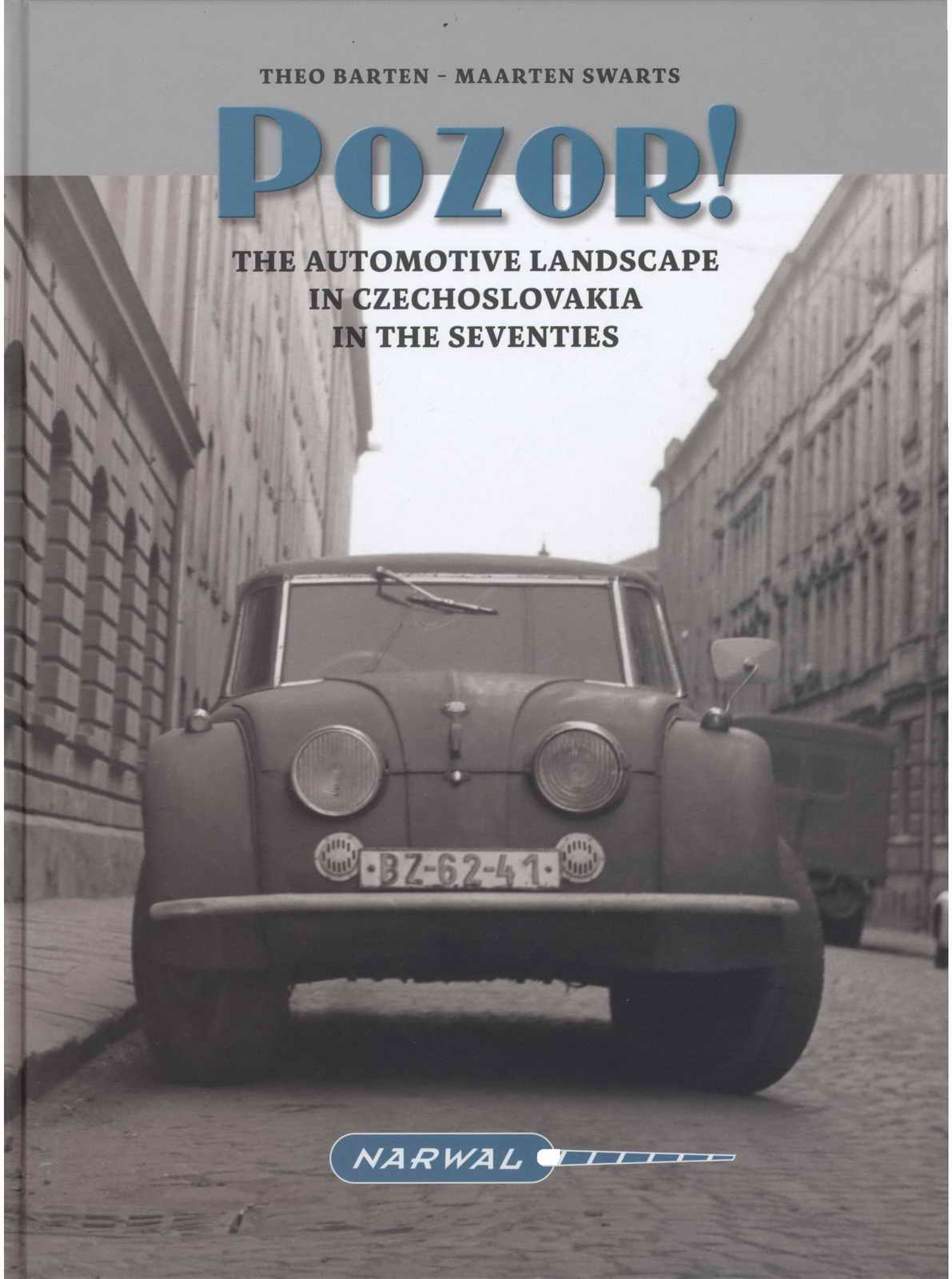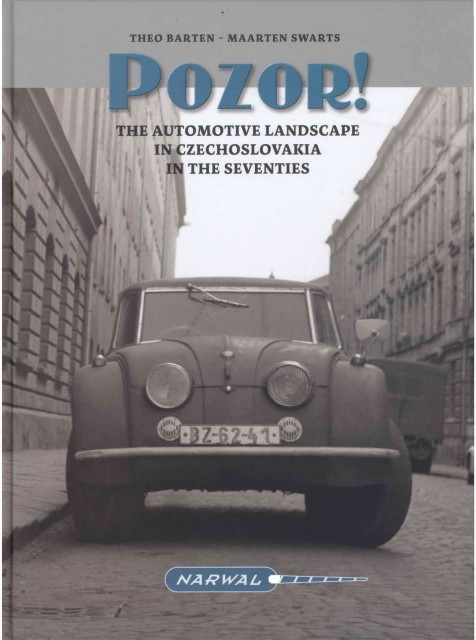Don’t panic dear reader; you haven’t inadvertently stumbled on a classic car site in error. This book may only contain a modicum of images of military vehicles and why I have chosen to review it may be confusing at first glance, but we are here for the bigger picture.
At the end of the Second World War Czechoslovakia was free from Nazi tyranny but found itself in the clutches of the Soviet Union who manipulated Czech politics to ensure a sympathetic Communist regime took control. In a short period of time the Warsaw Pact was born and other treaties came into play to pull the strings on issues such as the division of labour and other national interests within the Soviet sphere. One of these was intended to stop direct competition between friendly states and this doesn’t sound so terrible an idea on the surface but you can see where underlying problems can develop. Great industries would concentrate on specifics. The grand company Tatra was required to abandon car design in favour of trucks while Skoda took the lead on cars. I’m sure it all made sense at the time to a limited number of people but it did, however, mean the factories were all making stuff and markets for their goods were carefully developed. But was any of what they built any good in comparison with what was coming out of the West? I guess it depends how high you raise the bar.
One of the best ways of examining progress in countries is to look at the availability of consumer goods. The quality of the cars the peopledrive during the years of peace after a major war are a prime example. Despite all the propaganda coming out of the Warsaw Pact the reality is plain to see in this wonderful book from the Narwal stable. The procession of clapped out motors and a kaleidoscope of odds and sods do much to illustrate the long term impact of a country falling out of the hands of one totalitarian monster into the steely embrace of another.
While the West could progress with beautiful Cadillacs inspired by P38 Lightnings or the humble but brilliant Renault 4CV and Morris Minor; across the great divide of the Iron Curtain things were much, much different. This book takes us into a period well after World War II when the available road cars in Czechoslovakia were a rum old mix of stuff that did nothing to confirm a state of genuine economic progress to match the capitalist West thirty years after the war had ended. This might sound all a bit fanciful, but think about it and you will see where I am coming from. Cars strangle my bit of the world these days and the higher quality and better value they are, the more people want them. It’s a bit like the line from Field of Dreams – if you build it, he will come.Applying it to cars is an easy leap from a fictional baseball diamond.
You only have to look at the United States where the end of hostilities in 1945 allowed it’s huge automotive juggernaut to get back to what it did best. Even in Britain where export or die was the catchphrase on every car builder’s lips, things gradually got back to a kind of normal despite the severe economic problems gripping the country.
With an attitude of make do and mendforming an unwanted inheritance,the Czechs didn’t have much choice about what they could drive and the 1970s was a time when half a century’s worth of tatty old motors were still going strong many years before the collapse of Communism allowed true progress to resume. But, especially here in Britain we have to be careful how we balance much of our own domestic output with the ridicule the Skoda marque received in the UK and compare it to the modern reality. Skoda may be part of the Volkswagen conglomerate these days but the name survives while Austin, Morris, Rover and so many others from a precipitously smug UK have disappeared.
We should also remember that many of the great designers and engineers in the pre-war Czech motor industry found themselves dragooned into working for the Nazis and the rash of stories persist, correct or otherwise, about the true bloodline of the VW Beetle etc. The Czechs were no slouches at car design then or now. Remember also, that the best build quality of a good deal of Soviet designed weaponry came out of Czechoslovakia and found it’s way to client states the world over. We only have to look atTatra who found the expression to produce some genuinely beautiful streamlined vehicles before they concentrated on bigger things. Some of the less appealing vehicles may have produced a chorus of guffaws to sound in the taprooms of Dagenham, Coventry and Birmingham; but who is laughing now?
Serious stuff aside, the authors have brought together a wonderful compendium of their countless snaps from travels in Eastern Europe. The photography ticks all the right boxes and I could not stop grinning as I turned the pages. I think I have said before, they are men after my own heart. I love the notion that they may have taken these images with an eye on future opportunities but I am sure they did all this just because it was good fun.
Whatever was influencing them at the time the net result is a book of smiles. So many great and not so great marques are covered in this lovely book. Home grown Pragas, Skodas and a succession of lovely looking Tatras sit well alongside other exotica, including Kubelwagens and a wide range of Western odds and sods. I can see myself in the shoes of the authors, tabbing around Prague with big grins on their faces as they found one joy after another still going strong.
This old world has now been well and truly swept away and even the Czechoslovakian state is no more in the wake of a Velvet Revolution now twenty-five years old. Regardless of politics there has been a world of change in the cars we use and perhaps, just perhaps; someone down the line might produce a similar work on a country, Iraq say, when all the current threats have receded into the past and we can allow ourselves to revel in some form of automobile derived nostalgia, if – and it is a big one – anyone have thought to snap the mixture of jalopies rumbling around that ill-starred land. That’s optimism for you!
Far simpler for me to think back on my misspent youth snapping crap-heaps in the London landscape I knew while wondering if there is any mileage in all that stuff gathering dust in shoeboxes full of negatives and slides.
My friends have mixed feelings about what they see as my love affair for ‘crap cars’. I have been in Turkey with some of the lads recently and they were pretty much all baffled why I could take time to snap some of the treasures we encountered. I have always loved cars and my nostalgia for an era when much of what was being built was a load of old tat even then is very strong although I also like the sexy stuff as well.
So, bravo Narwal! You have done it again. Beyond the motors themselves this book fits in to the wider world of post conflict realities because it allows us to see a new life after death, even in the controlled world of a Communist dominated state at the height of the Cold War. Things could only get better and, happily, they did.
POZOR!
The Automotive Landscape in Czechoslovakia in the Seventies
By Theo Barten and Maarten Swarts
Narwal
ISBN: 978-90-817110-3-6

